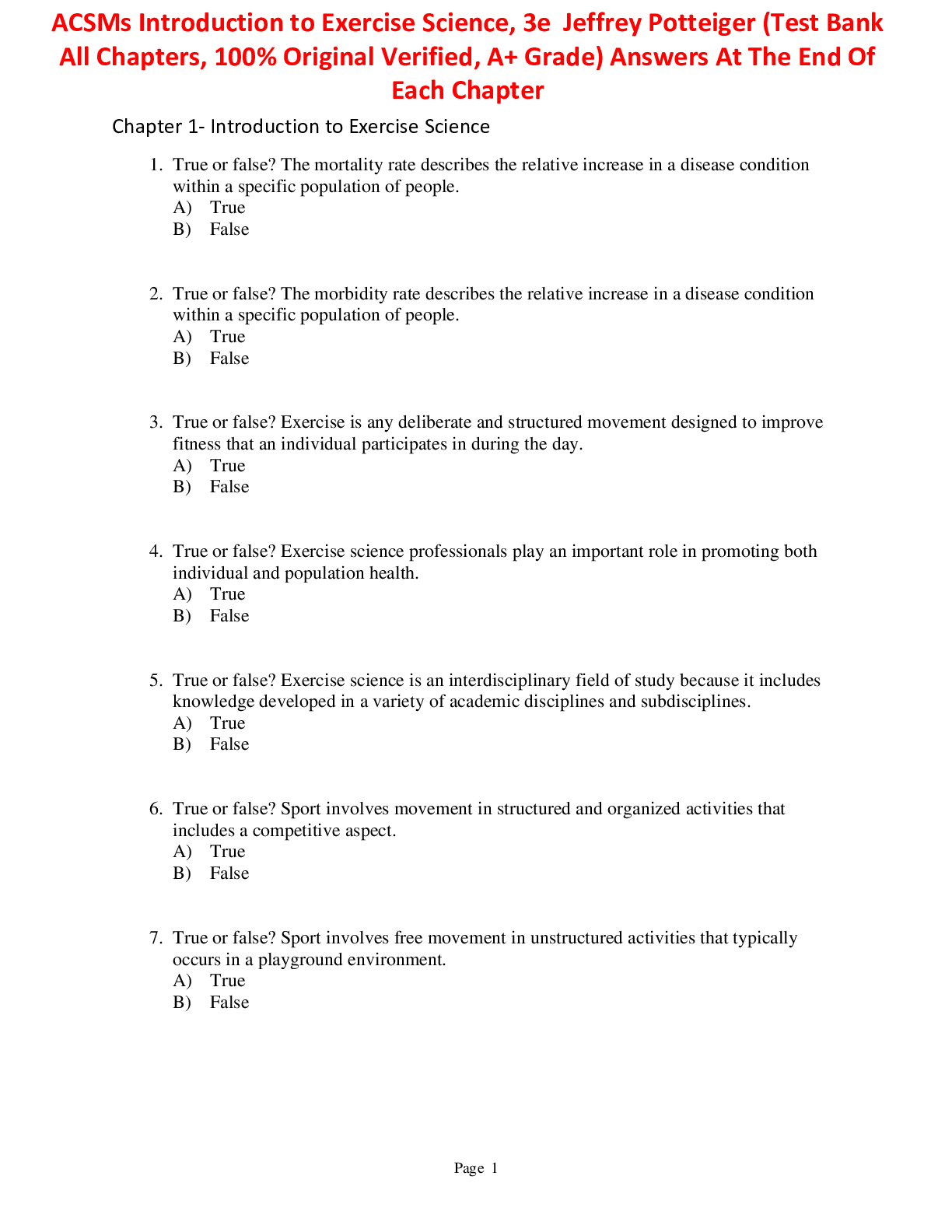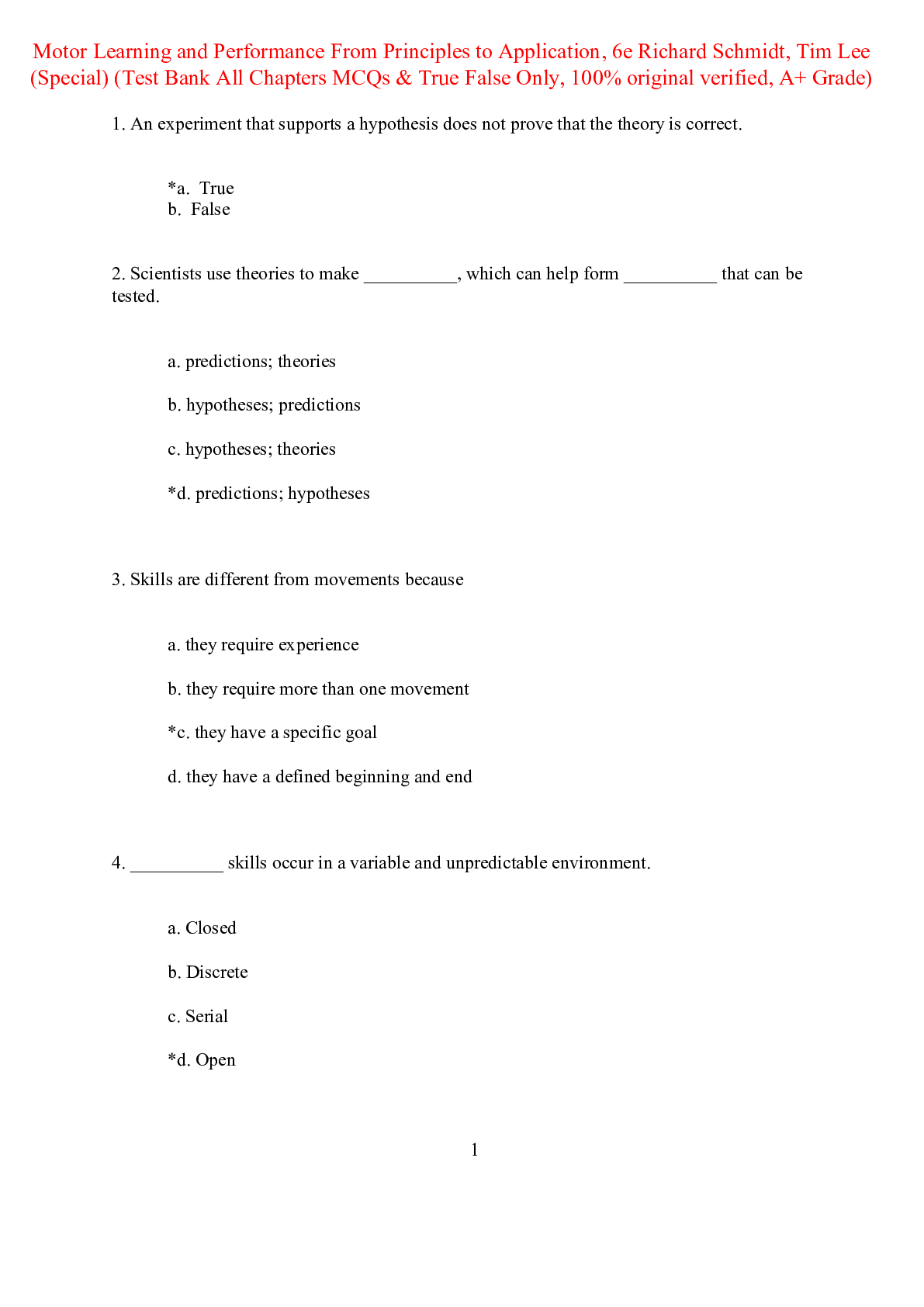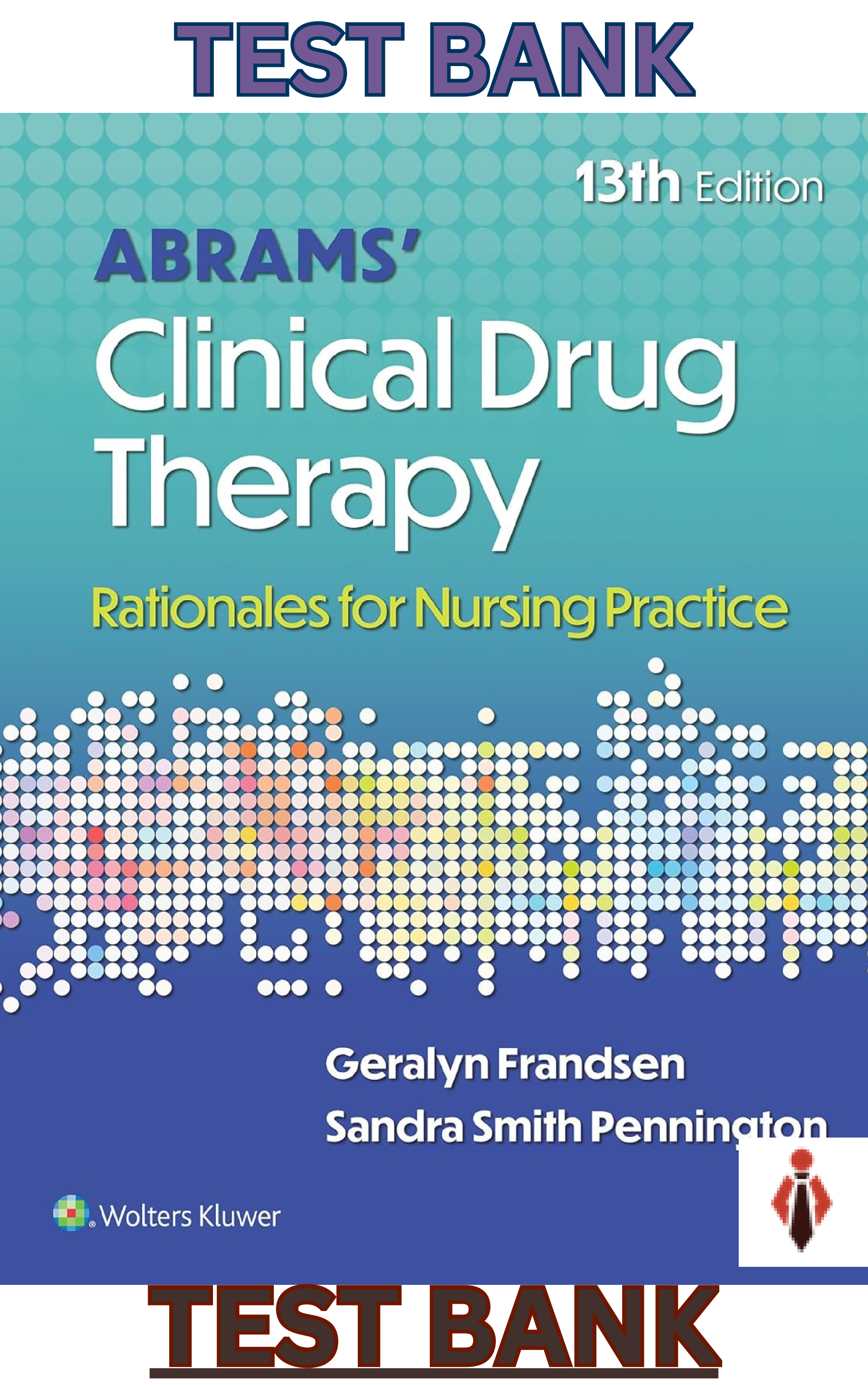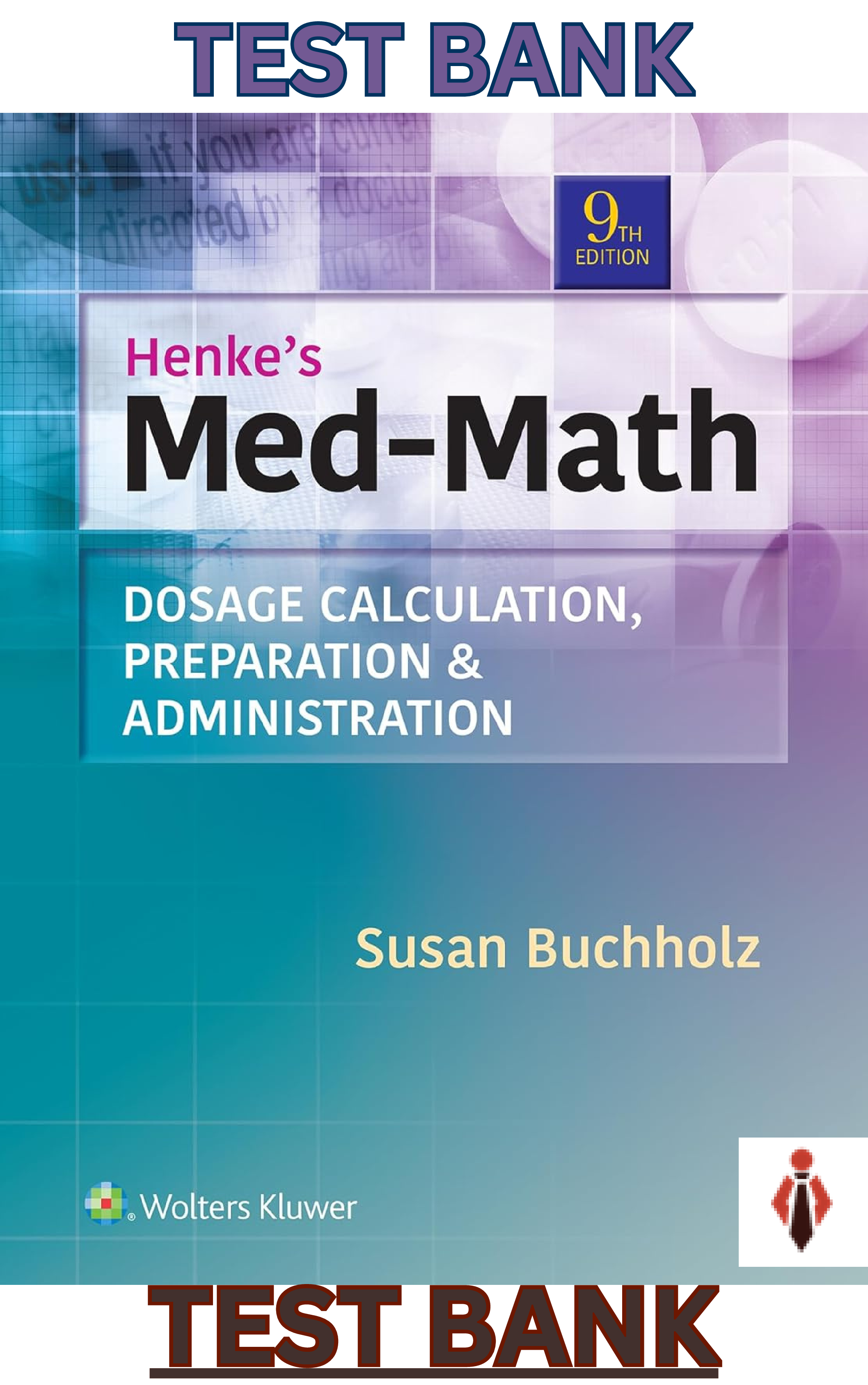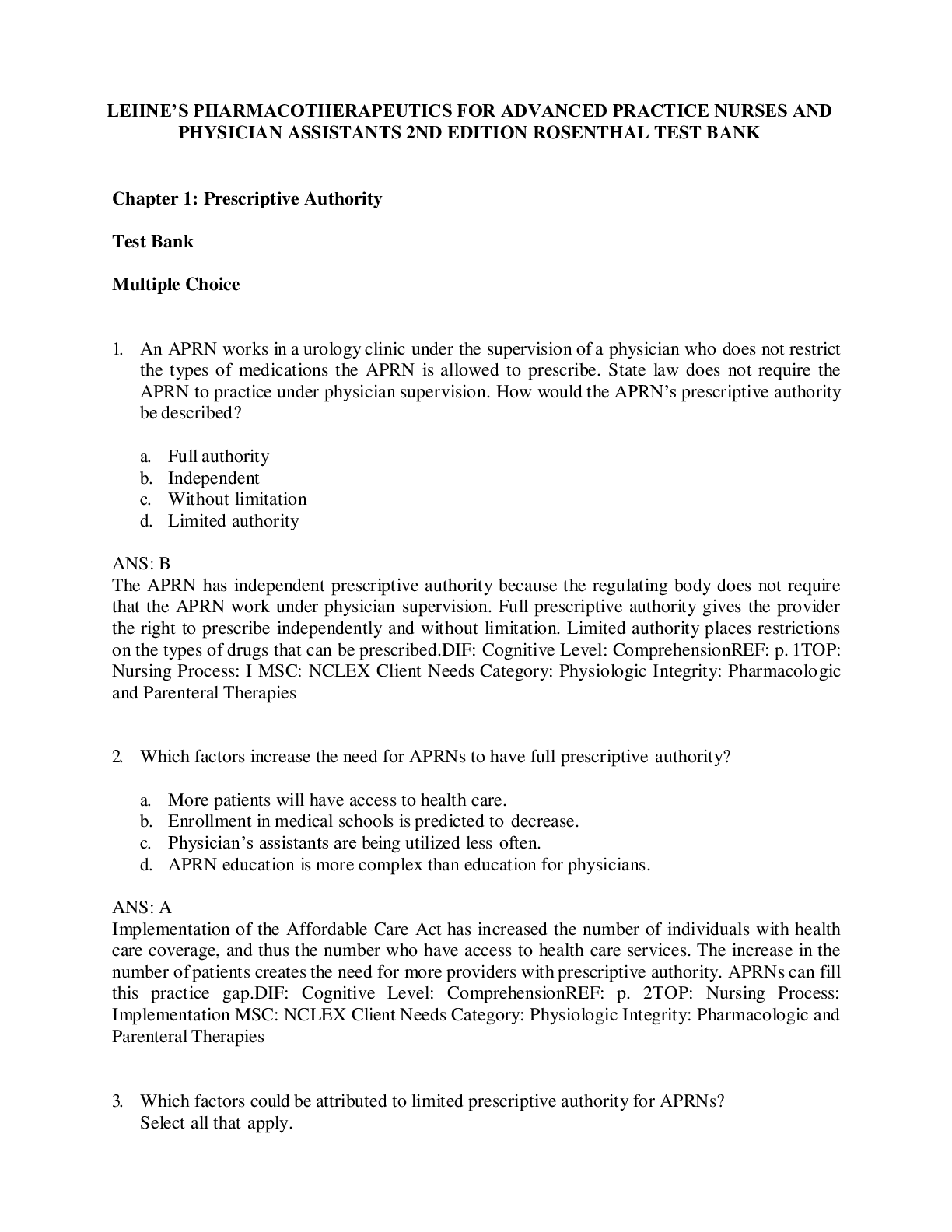Advanced Assessment 4th Edition Goolsby Test Bank
Document Content and Description Below
NSG6420 QUIZ 3 1 . Question : Susan P., a 60-year-old woman with a 30 pack year history, presents to your primary care practice for evaluation of a persistent, daily cough with increased sputum p... roduction, worse in the morning, occurring over the past three months. She tells you, “I have the same thing, year after year.” Which of the following choices would you consider strongly in your critical thinking process? Student Answer: Seasonal allergies Acute bronchitis Bronchial asthma Chronic bronchitis Instructor Explanation: The pulmonary component includes an abnormal inflammatory response to noxious stimuli, principally tobacco, but also occupational and environmental pollutants. The hallmark of chronic bronchitis is a daily chronic cough with increased sputum production lasting for at least 3 consecutive months in at least 2 consecutive years, usually worse on awakening; this may or may not be associated with COPD (GOLD, 2011). Emphysema is characterized by obstruction to airflow caused by abnormal airspace enlargement distal to terminal bronchioles. Kennedy-Malone, Laurie, Kathleen Fletcher, Lori Martin-Plank. Advanced Practice Nursing in the Care of Older Adults. F.A. Davis Company, 2014-01-14. VitalBook file. (page 206) & Goolsby, Mary J., Laurie Grubbs. Advanced Assessment Interpreting Findings and Formulating Differential Diagnoses, 3rd Edition. F.A. Davis Company, 11/2014. VitalBook file. (page 213) Points Received: 2 of 2 Comments: Question 2. Question : A patient presents complaining of a 5 day history of upper respiratory symptoms including nasal congestion and drainage. On the day the symptoms began he had a low-grade fever that has now resolved. His nasal congestion persisted and he has had yellow nasal drainage for three days associated with mild headaches. On exam he is afebrile and in no distress. Examination of his tympanic membranes and throat are normal. Examination of his nose is unremarkable although a slight yellowish-clear drainage is noted. There is tenderness when you lightly percuss his maxillary sinus. What would your treatment plan for this patient be? Student Answer: Observation and reassurance Treatment with an antibiotic such as amoxicillin Treatment with an antibiotic such as a fluoroquinoline or amoxicillin-clavulanate Combination of a low dose inhaled corticosteroid and a long acting beta2 agonist inhaler. Instructor Explanation: MedU Card #4. According to the American Academy of Ortolaryngology—Head and Neck Surgery Foundation guidelines (2007) on sinusitis, making the distinction between a lingering viral upper respiratory infection that affects the nose and sinuses (viral rhinosinusitis) or early acute bacterial sinusitis can be difficult. It is more likely to be a viral rhinosinusitis if the duration of symptoms is less than ten days and they are not worsening. In this case, you can continue to observe the patient and reassure him that antibiotics are not necessary at this time. Points Received: 2 of 2 Comments: Question 3. Question : Emphysematous changes in the lungs produce the following characteristic in COPD patients? Student Answer: Asymmetric chest expansion Increased lateral diameter Increased anterior-posterior diameter Pectus excavatum Instructor Explanation: In COPD, patients commonly develop a barrel-shaped chest due to emphysematous changes in the lungs. A barrel shape is due to an increased anterior-posterior (AP) diameter. In emphysema, there is a 1:1 ratio of AP to lateral diameter; AP diameter equals the lateral diameter. Normally the AP diameter is twice the lateral diameter. Goolsby, Mary J., Laurie Grubbs. Advanced Assessment Interpreting Findings and Formulating Differential Diagnoses, 3rd Edition. F.A. Davis Company, 11/2014. VitalBook file( page 213-214) & Kennedy-Malone, Laurie, Kathleen Fletcher, Lori Martin-Plank. Advanced Practice Nursing in the Care of Older Adults. F.A. Davis Company, 2014-01-14. VitalBook file. (page 206) Points Received: 2 of 2 Comments: Question 4. Question : When palpating the posterior chest, the clinician notes increased tactile fremitus over the left lower lobe. This can be indicative of pneumonia. Areas of increased fremitus should raise the suspicion of conditions resulting in increased solidity or consolidation in the underlying lung tissue, such as in pneumonia, tumor, or pulmonary fibrosis. In the instance of an extensive bronchial obstruction: Student Answer: No palpable vibration is felt Decreased fremitus is felt Increased fremitus is felt Vibration is referred to the non-obstructed lobe Instructor Explanation: Areas of incre [Show More]
Last updated: 1 year ago
Preview 1 out of 13 pages
.png)
Reviews( 0 )
Document information
Connected school, study & course
About the document
Uploaded On
Oct 17, 2021
Number of pages
13
Written in
Additional information
This document has been written for:
Uploaded
Oct 17, 2021
Downloads
0
Views
80


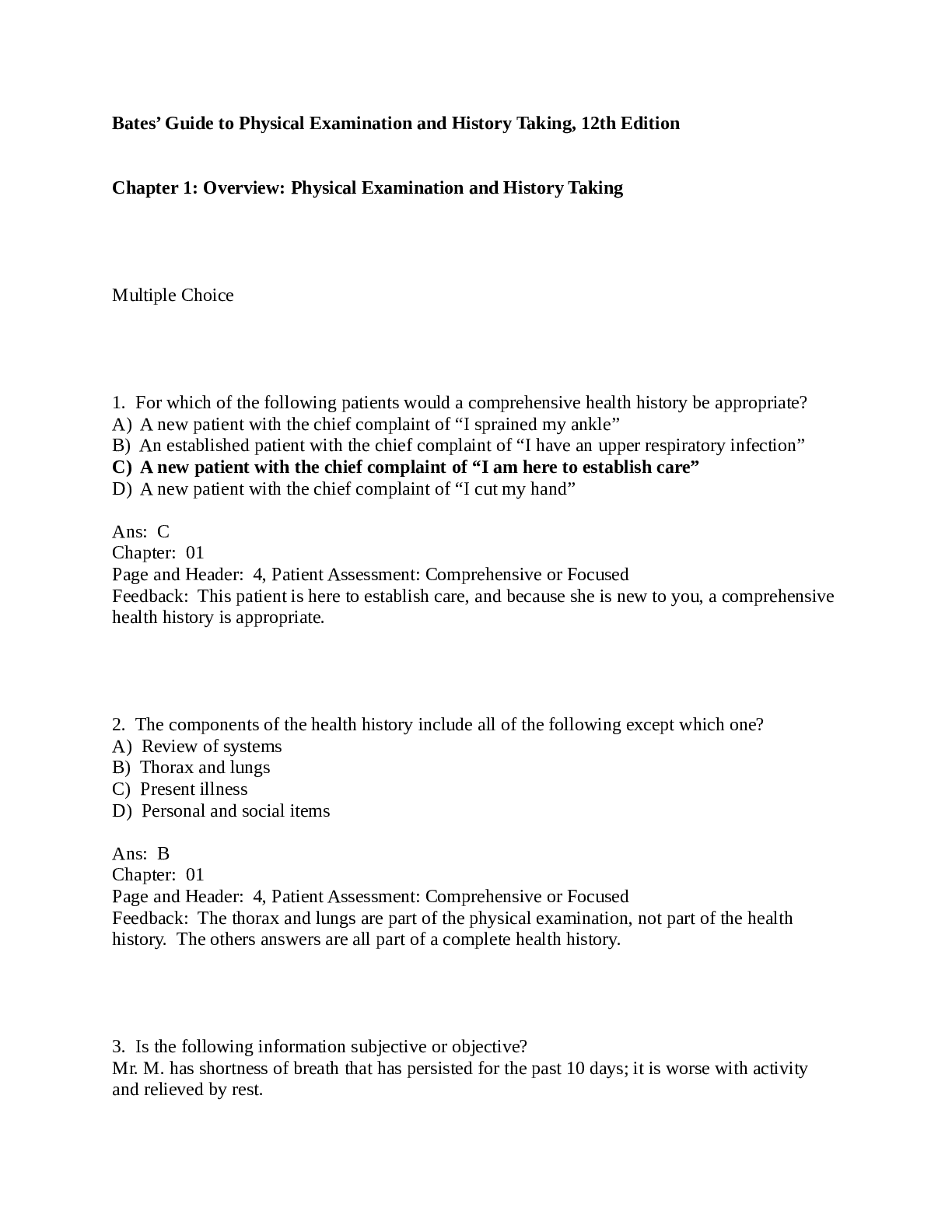
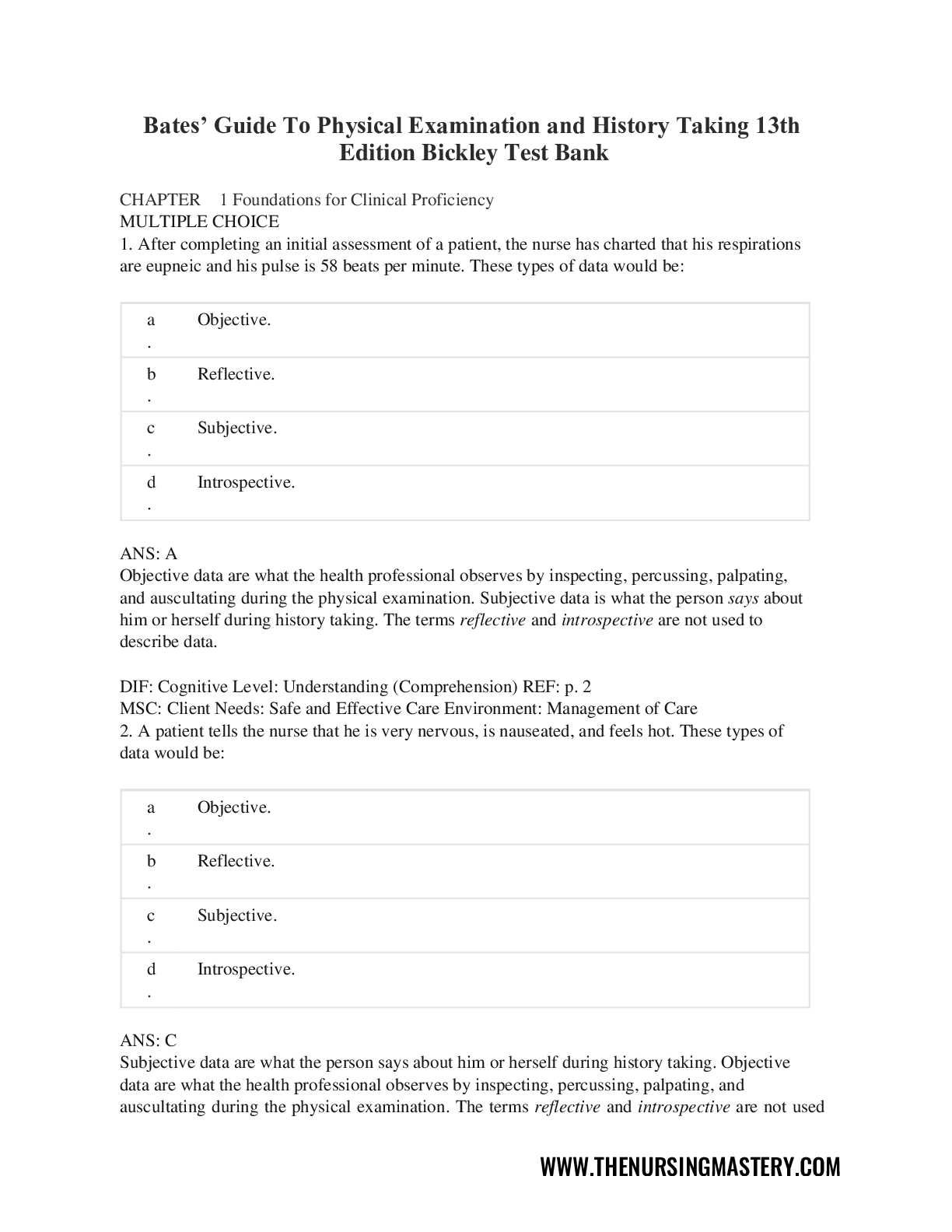
.png)
.png)
.png)

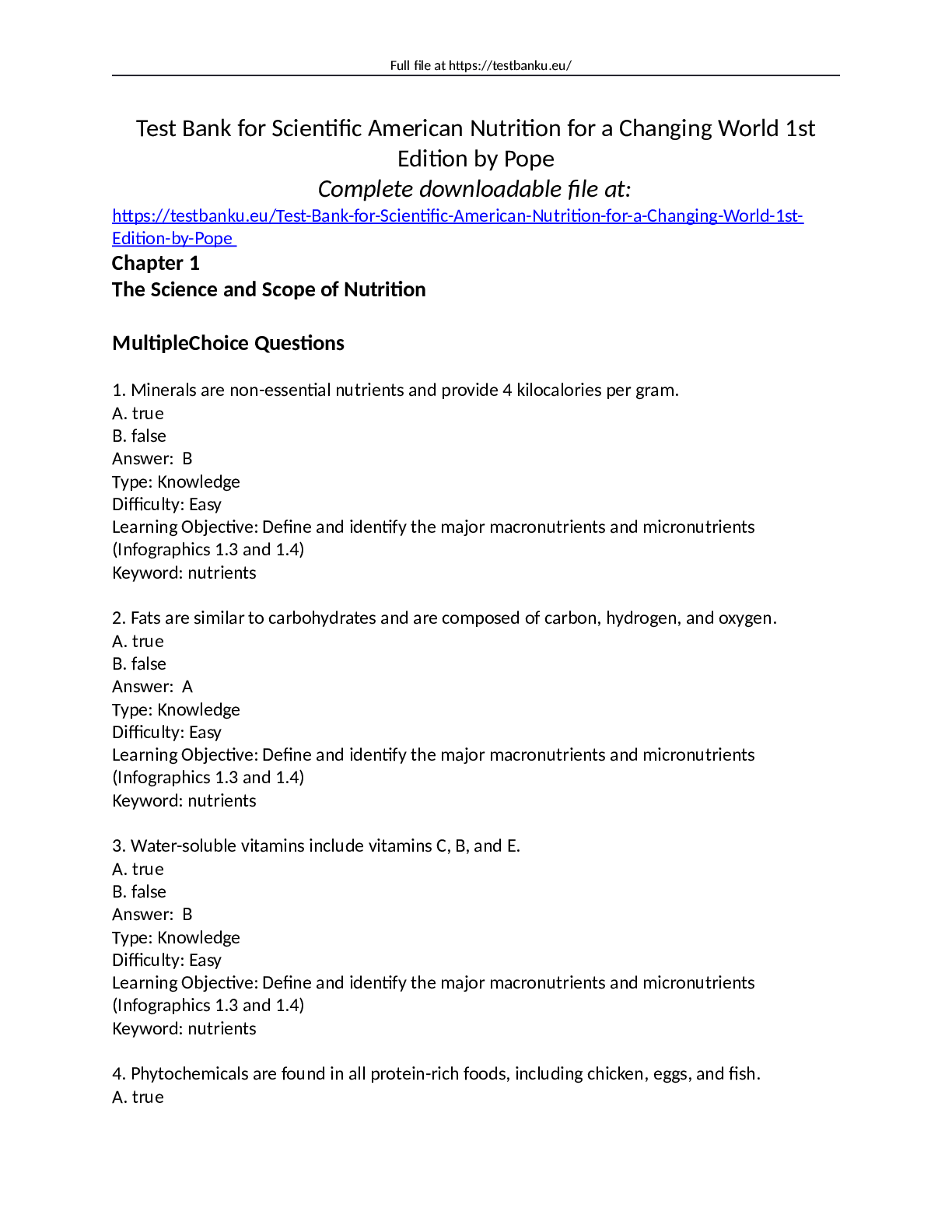
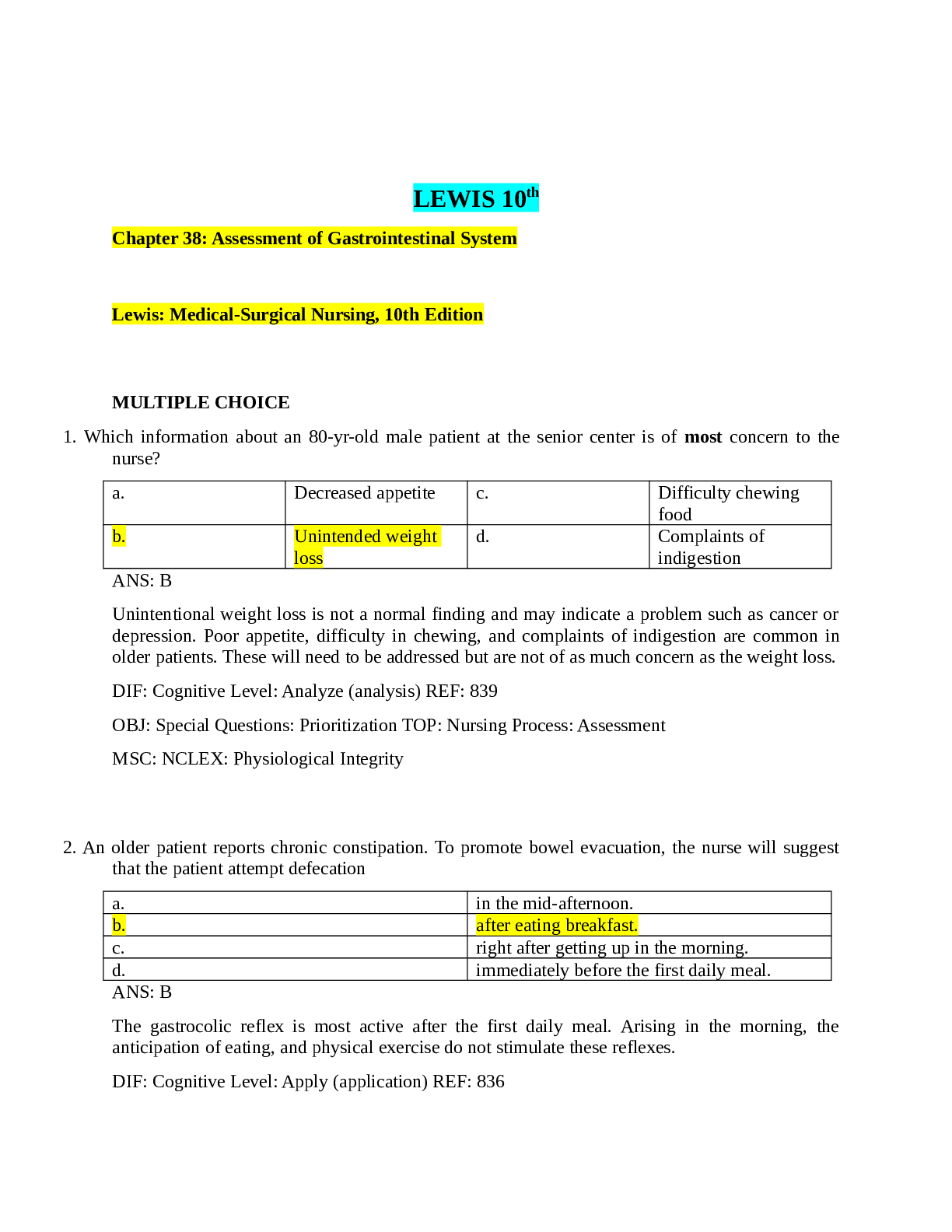

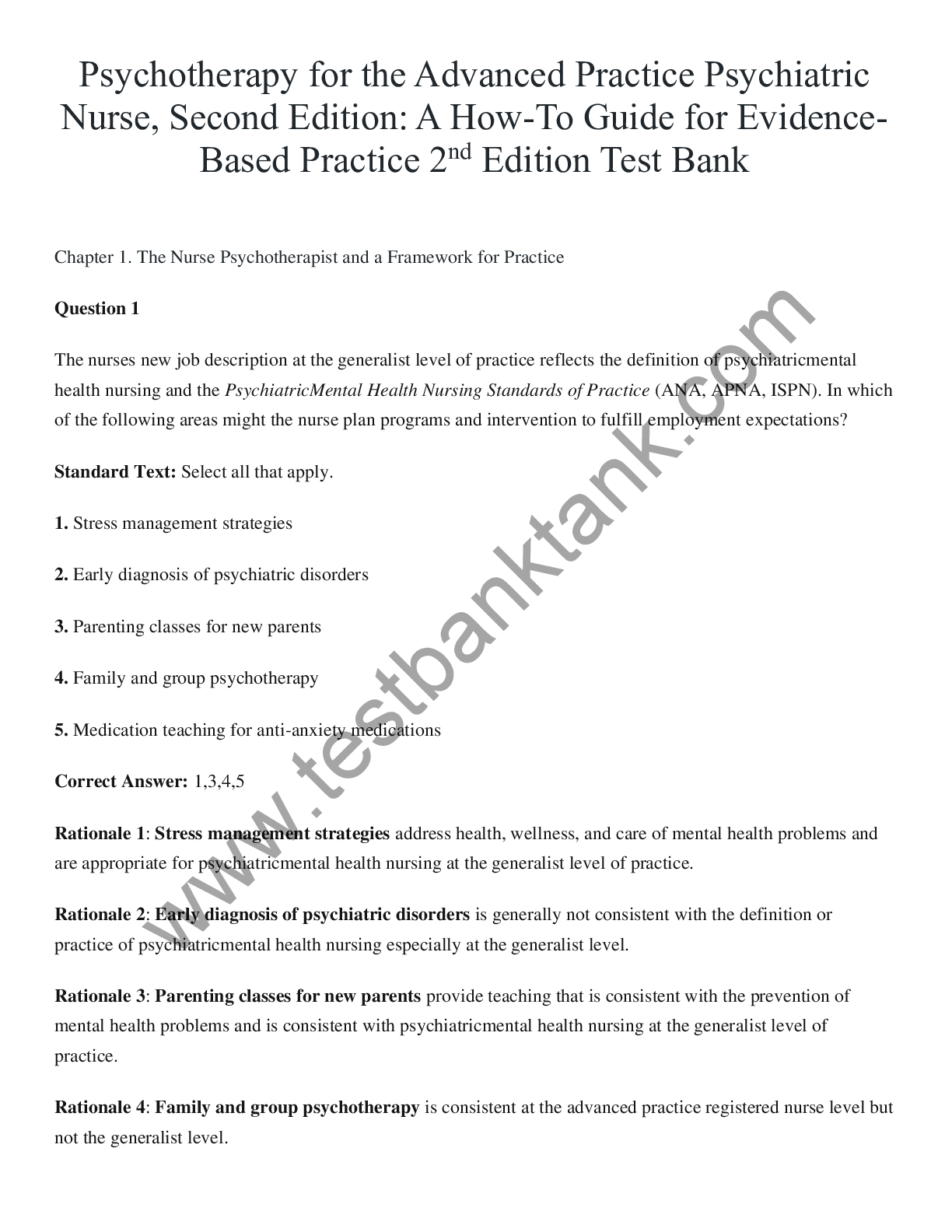
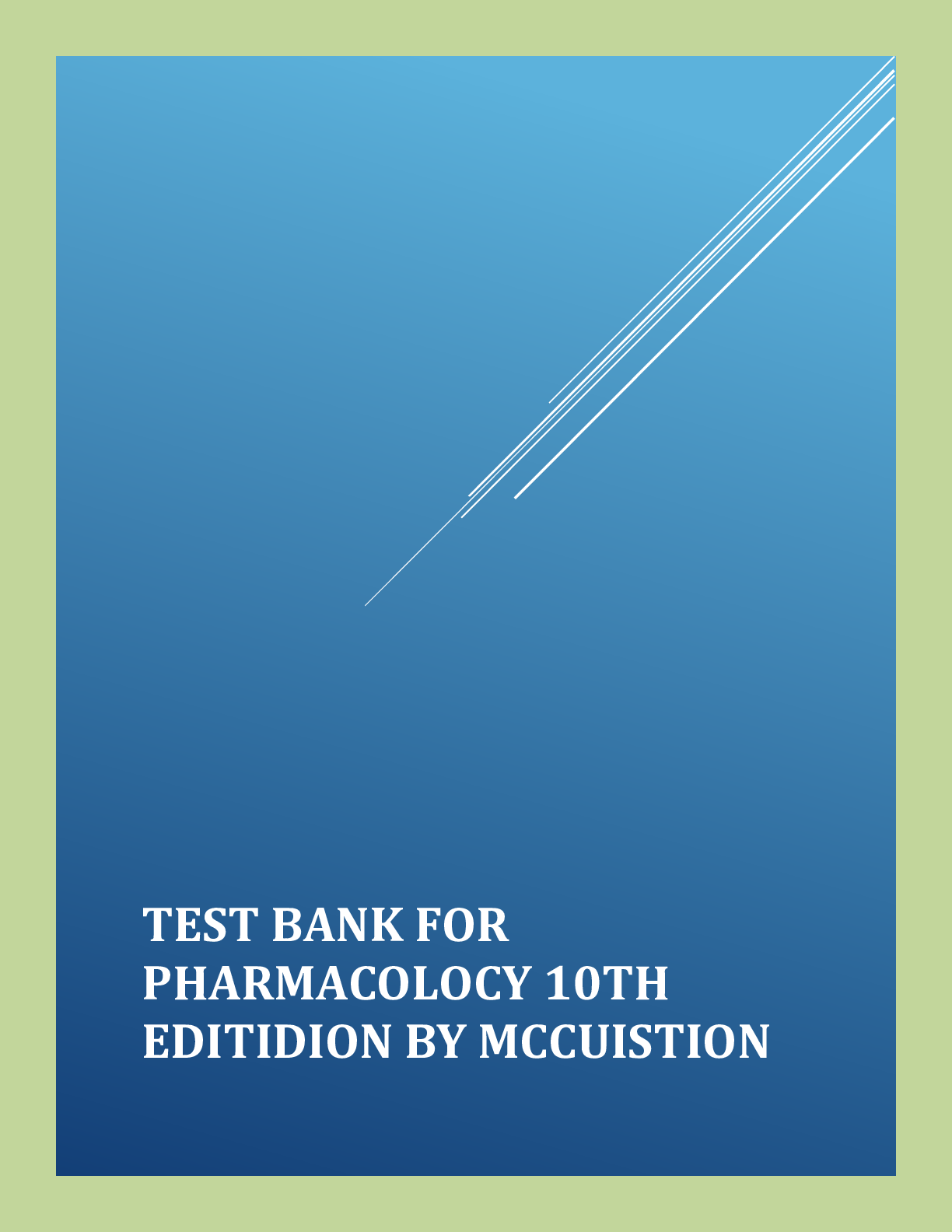
.png)

.png)
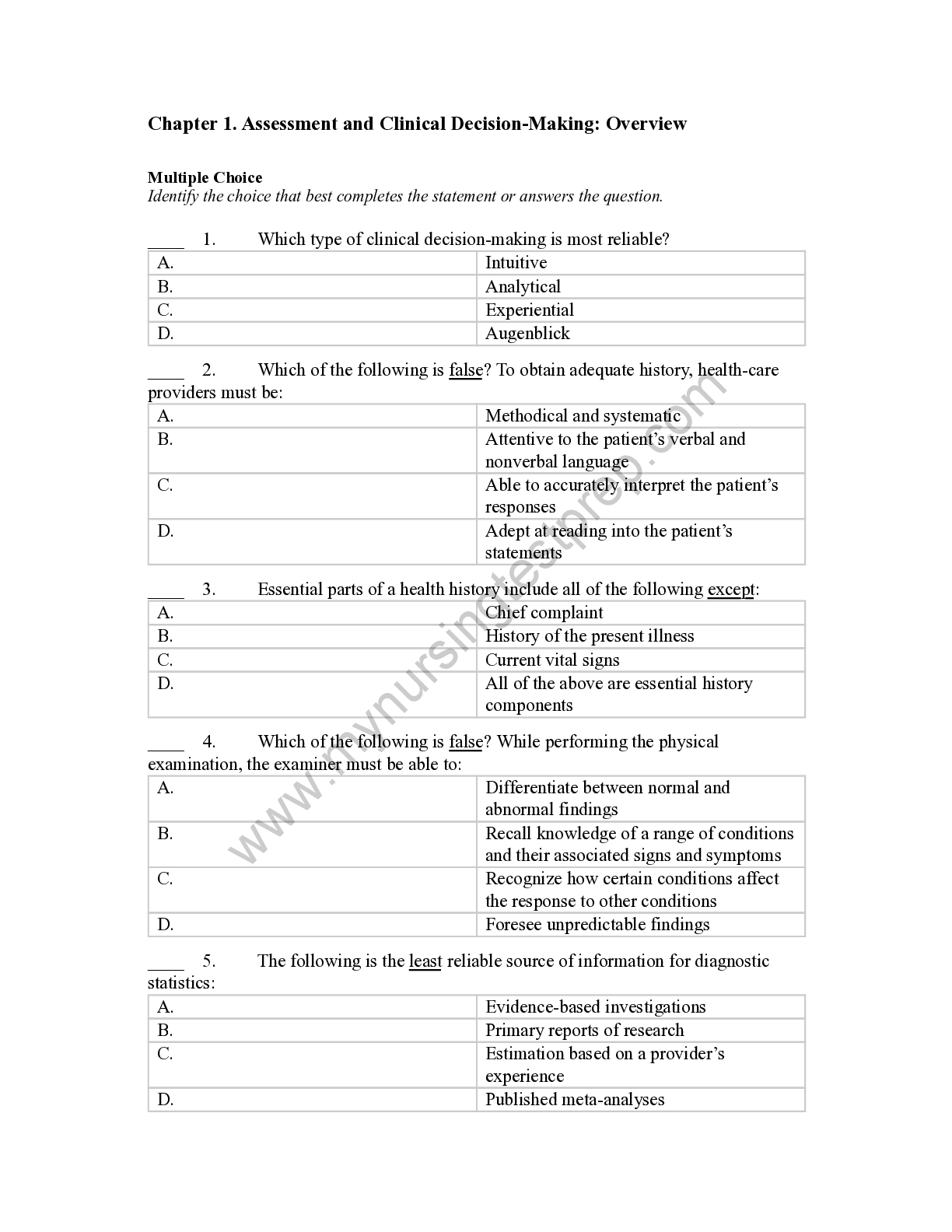

.png)
 Susan Whitbourne, Stacey Whitbourne, Candace Konnert (Test Bank).png)



